There are a few types of error coins that are eligible for NGC certification, but do not receive a grade. Learn more about what coins fall into this category of “MINT ERROR” and why.
There are a few types of error coins that are eligible for NGC certification but do not receive a grade. These coins are simply attributed as MINT ERROR on the certification label without any grade notation. This of course can be a source of questions, and the information here describes which coins fall into this category and why.
There are two basic categories of error coins that are certified by NGC but do not receive a grade. First, coins that, as a result of the error, lack enough detail to be graded. And, second, mint errors that were never struck by the dies. The reason that these mint errors cannot be graded is simple. Strike is a central component of grade and in the absence of this information a precise grade cannot be assigned.
The first category involves a few basic error types: die adjustment strikes, split planchets, and struck thrus (although other errors can be included in this group).
Die adjustment strikes, as the name implies, are used to set the distance and the pressure of the dies to the planchet. In this stage of operation, there can be a noticeable lack of detail to the coin. This lack of detail will prevent the coin from being eligible for grading, although it can be readily and accurately attributed. The edge of a die adjustment strike will be either weak or missing. This is an important difference from a struck thru which has full edge detail.
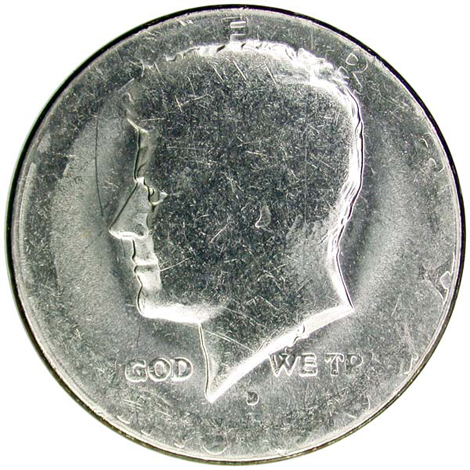
PHOTO #1: 1976-D half dollar, die adjustment strike, obverse. Low pressure did not allow for all of the details of the coin to be present.
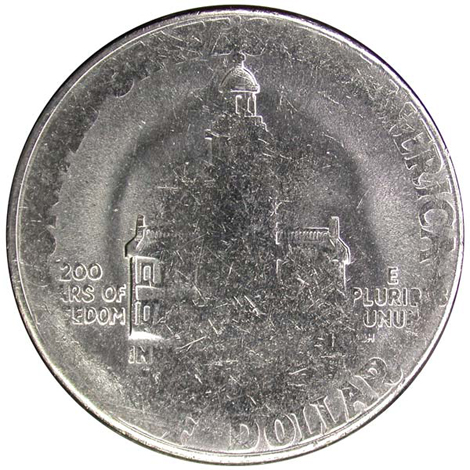
PHOTO #2: 1976-D half dollar, die adjustment strike, reverse.
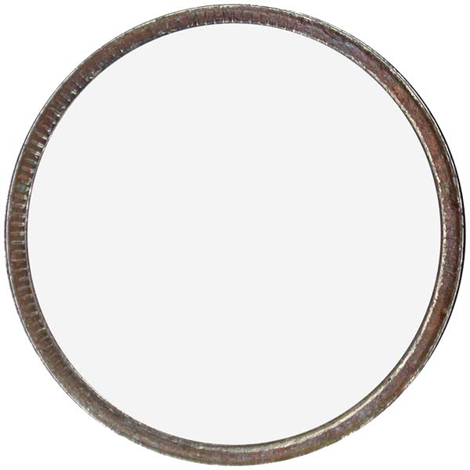
PHOTO #3: 1976-D half dollar, die adjustment strike, edge view. Note that the reeding is either weak or missing from the edge of the coin.
Coins struck on split planchets, when the split occurs before striking, can appear very similar to die adjustment strikes. They will exhibit a varying degree of weakness to the obverse and reverse depending on the thickness of the planchet. This weakness at times will prevent the coin from exhibiting enough detail to be graded. Unlike die adjustment strikes, the edge of the coin will be normally formed but will not be of the proper thickness.
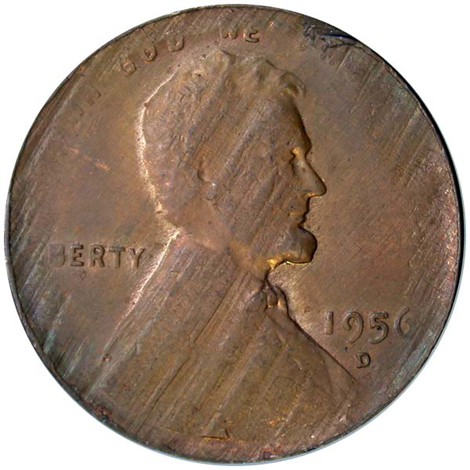
PHOTO #4: 1956-D Lincoln Cent, struck on split planchet, obverse.
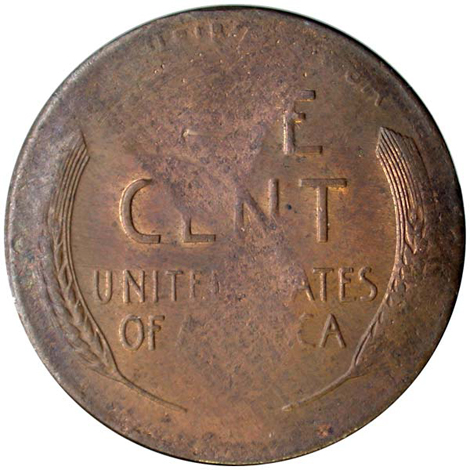
PHOTO #5: 1956-D Lincoln Cent, struck on split planchet, reverse.
Next we come to the struck thru errors. This group of errors is the most confusing, not only because of the grading issue, but also for attribution. Inherent in the manufacturing of coins are items like oil, grease and dirt. While oil and grease are necessary to allow machines to function properly. They become a detriment when they interfere with the minting process. A struck thru is quite simply when a foreign substance comes between die and planchet (coin blank) at time of striking.
The occurrence of struck thrus on circulating coinage is not rare, and minor examples are fairly common. Although these coins may not have been manufactured “perfectly,” the reality is that the mint does not hold these coins back from circulation. Most of these “minor flaws” will never be noticed by the general public and once circulated they become even less apparent. For this reason, NGC does not certify minor struck thrus as being mint errors if they are minor and therefore acceptable within mint tolerances. This is especially true with the statehood quarter series. NGC does not attribute coins where only one letter or number is obstructed, or when the obstruction is very weak (or partially struck thru which makes a small portion of the design visible but “blurry”). Obstructions that impede a large area or are significant will be noted. The location and size of the struck thru will determine whether there is enough detail to grade the coin, or if it will simply be attributed as a mint error without grade. Some of the most dramatic struck through mint errors are not graded.
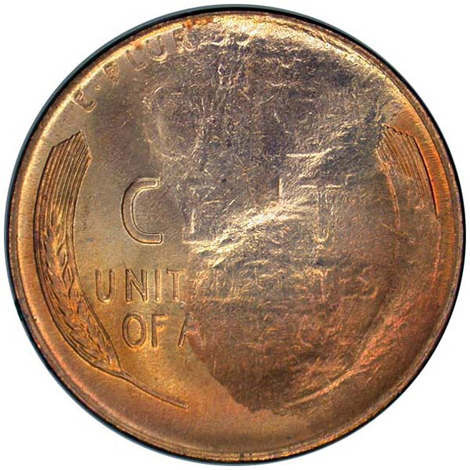
PHOTO #6: The reverse of a Wheat Cent, struck thru grease, rendering some portion of the design blurry or obliterating it completely.
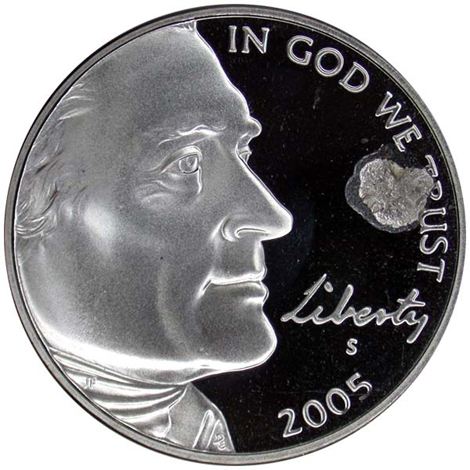
PHOTO #7: The obverse of a Proof 2005-S Jefferson Nickel, with a large struck thru of foreign material. The highly mirrored surface of proof coinage makes struck thrus of this type especially dramatic.
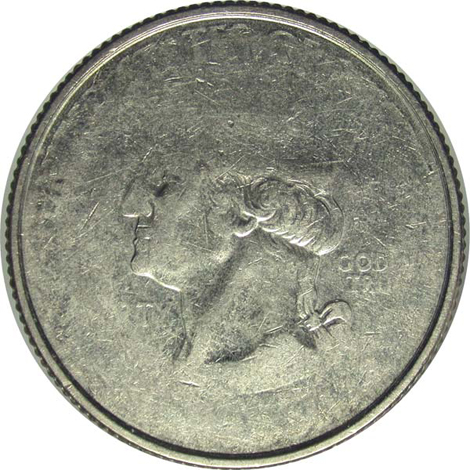
PHOTO #8: Obverse of a State Quarter struck through grease. Note the resemblance to a die adjustment strike, except the reeded edge is full. Struck thrus can also affect just one side of a coin, while a die adjustment strike will show weakness on both.
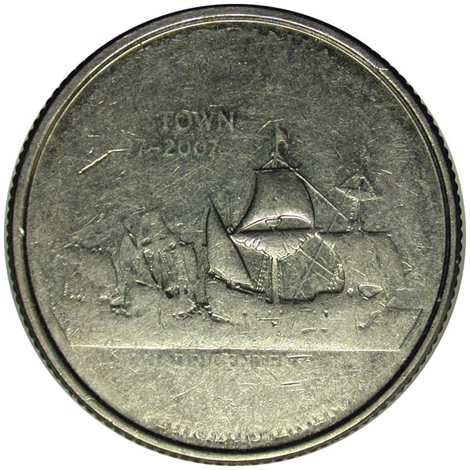
PHOTO #9: Reverse of a Virginia State Quarter, struck thru.
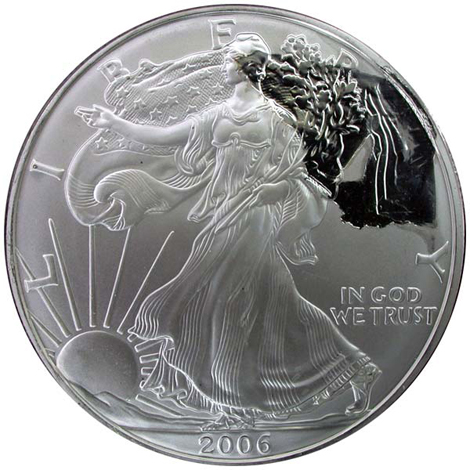
PHOTO #10: A 2006 Silver Eagle, most likely struck thru plastic die cap. The matte-like surface of this issue makes such errors especially dramatic.
Lastly, we come to blanks and planchets. Since these items never made it to the coining press and struck, they lack any detail. Therefore, blanks and planchets are attributed by NGC but never graded. For more information about coin blanks and planchets, see our article on planchet forming.
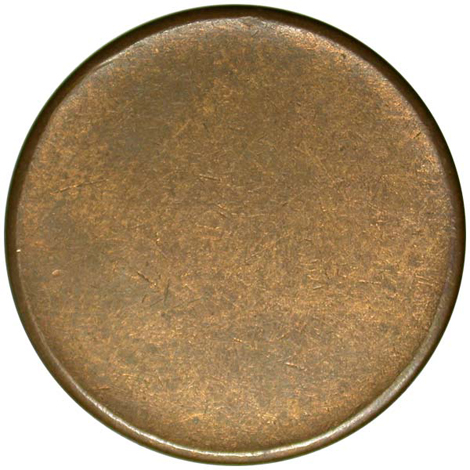
PHOTO #11: A Lincoln Cent planchet.
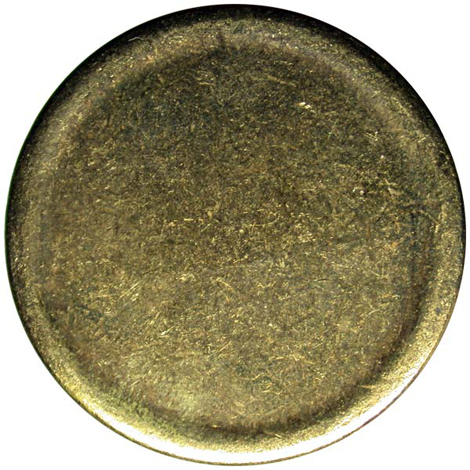
PHOTO #12: A Sacagawea Dollar or Presidential Dollar planchet.

